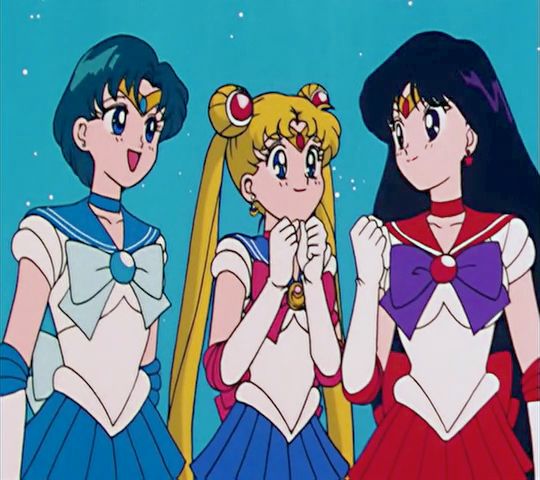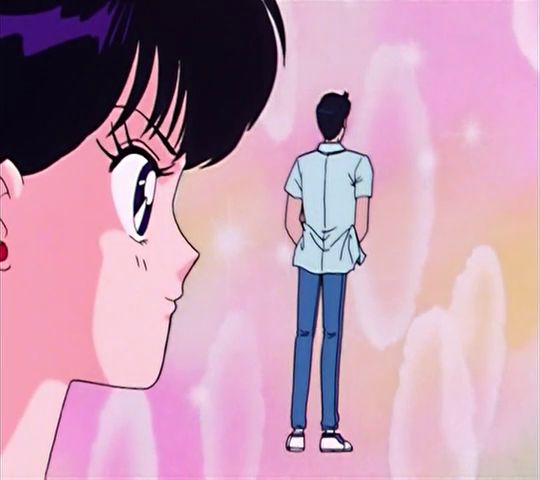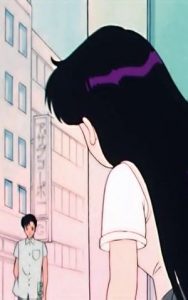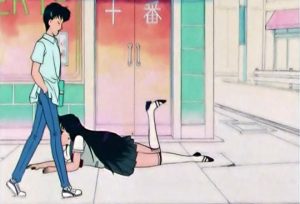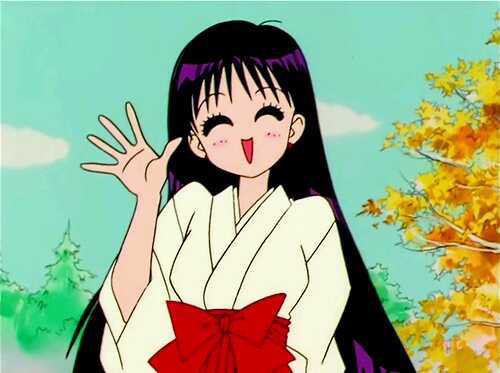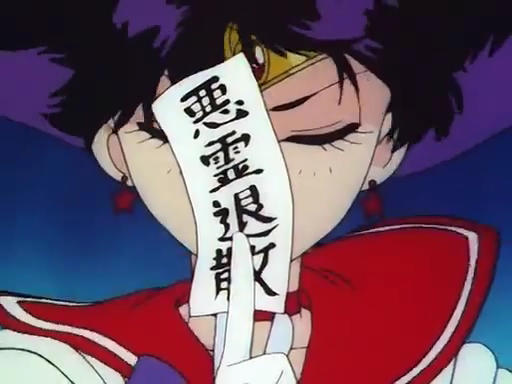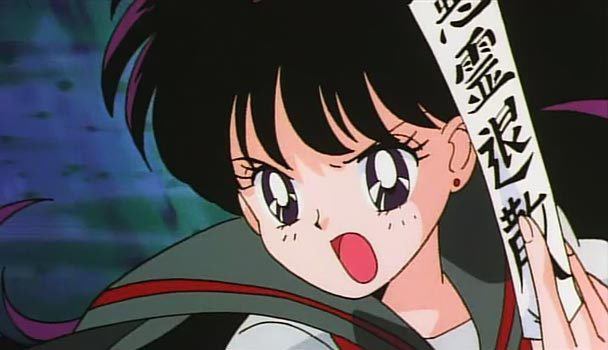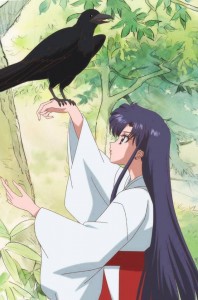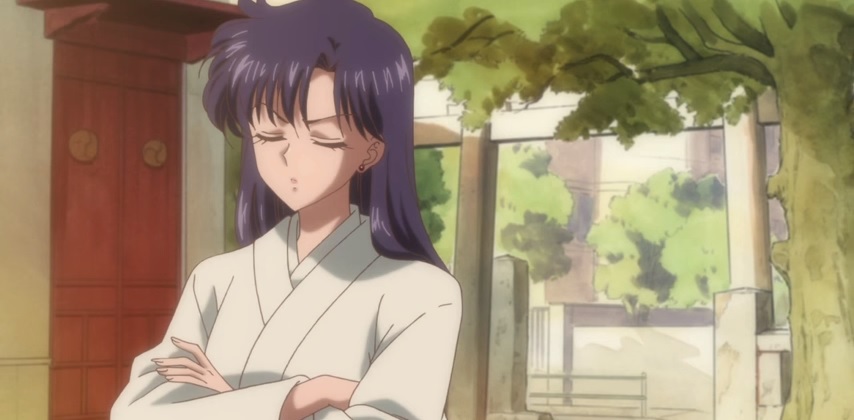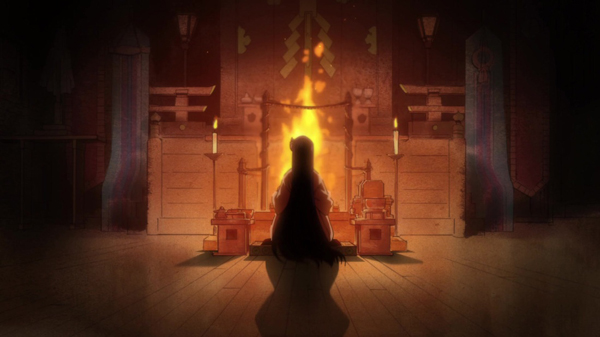
Rei Meditating at the Great Fire
Though I hate to speak for other people, I think it’s relatively safe to say that the customs, beliefs, and traditions of the Shinto religion are often not well understood in the West and, therefore, it’s a bit difficult to get a handle on the accuracy of its portrayal in anime, manga, and movies. The good news is that even Japanese people don’t understand it all that well, and very often you’ll see vague scenes of “spirits” all passed off under the Shinto umbrella. That’s actually what’s going on with the fire-reading (also known as pyromancy) scenes at the Hikawa shrine, where Rei uses the power of fire to consult with spirits and to get an understanding for what’s currently happening elsewhere or about to happen. What do I mean? Well, let’s get started!
The unfortunate and short answer to this question is that, quite simply, Shinto has no traditions of fire-reading or even smoke-reading. In fact, with the exception of the o-mikuji (paper strips telling the bearer’s fortune for the upcoming year or near future) that you can get at a shrine, the Shinto faith (if you can call it that) doesn’t really believe in telling the future at all. Shinto deals in the past (the connection between the god’s who created the Earth and their lineage through the reigning emperor) and the present (the spirits or gods which inhabit everything around us), but it has no real concept of the future or even much of an afterlife. For that reason alone, the many scenes of Rei kneeling down and consulting the great fire are a bit out of place, to say the least.
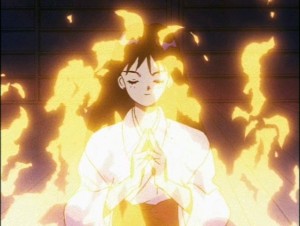
Speaking to the spirits?
That’s not to say that fire-reading is completely without precedent in Japan, of course! A form of fire-reading – or, more accurately, pyromancy – was practiced in ancient China (and by connection, Japan) through what was known as oracle bones. The fortune teller would etch questions onto animal bones or turtle shells, put them into a fire, the bones/shells would heat up and explode, and then they would analyze how it broke and try to divine the future. This, however, fell out of practice a long time ago, with the last known examples showing up in the Zhou dynasty in China—around 771BC.
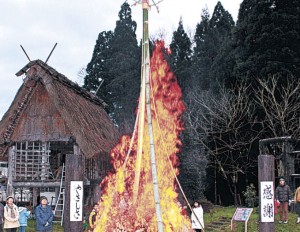
Jomon Fire-Reading Festival (1/2016)
That being said, the practice isn’t entirely unheard of in Japan, even if it doesn’t have connection to Shinto as it’s actively practiced today. In fact, the city of Oyabe in Toyama prefecture holds an annual festival in January in which they bring together the dried husks from the rice harvest, bundle them into a giant tower, and burn them as part of a festival in order to see what the coming year holds.
There are also other so-called fire festivals (左義長; sagichou) held throughout Japan during January that date back to 1251 AD, but these are more symbolic festivals that have to do with lighting up the dark winter and bringing luck through the coming year, and less to do with trying to engage in any sort of fortune telling.
So what does this ultimately tell us? Is Rei’s fire-reading a sham or some sort of mistake made by Ms. Takeuchi and the creators of the Sailor Moon anime? Not at all! Pyromancy is very much a real form of fortune-telling (ignoring for a second whether or not we believe fortune-telling is real) and it’s even mentioned in Act 3 of the manga that it’s Rei herself who is spiritual and has mysterious powers, not exactly the connection to the Shinto shrine itself. It would only make sense that Rei, being the Sailor Soldier of fire, would find affinity with fire and would use it to focus her natural spiritual abilities.
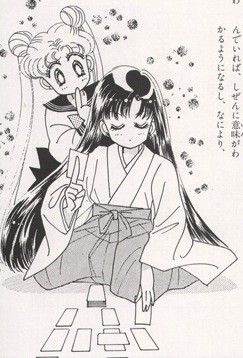
Rei doing a tarot card reading
Rei is also seen doing tarot card reading on several occasions in the manga, so it’s not out of the realm of possibility that she practices many different forms of fortune telling in order to channel her own connection with the spirits.
I guess the take-home lesson here is that while the fire meditation / fire-reading that Rei does throughout the Sailor Moon series may not actually be a part of the Shinto faith, it’s not entirely heard of in Japanese history and, moreover, ties directly into her role as the Sailor Mars: Soldier of Fire. More likely than not, as with the tarot cards she uses on several occasions throughout the manga, it’s more a manner of giving her something to focus on to center herself (much like how Ami uses swimming). In the end, it probably doesn’t really matter, but it’s at least nice to know that it’s a part of Rei as a character, and not a part of the greater Shinto connection!
